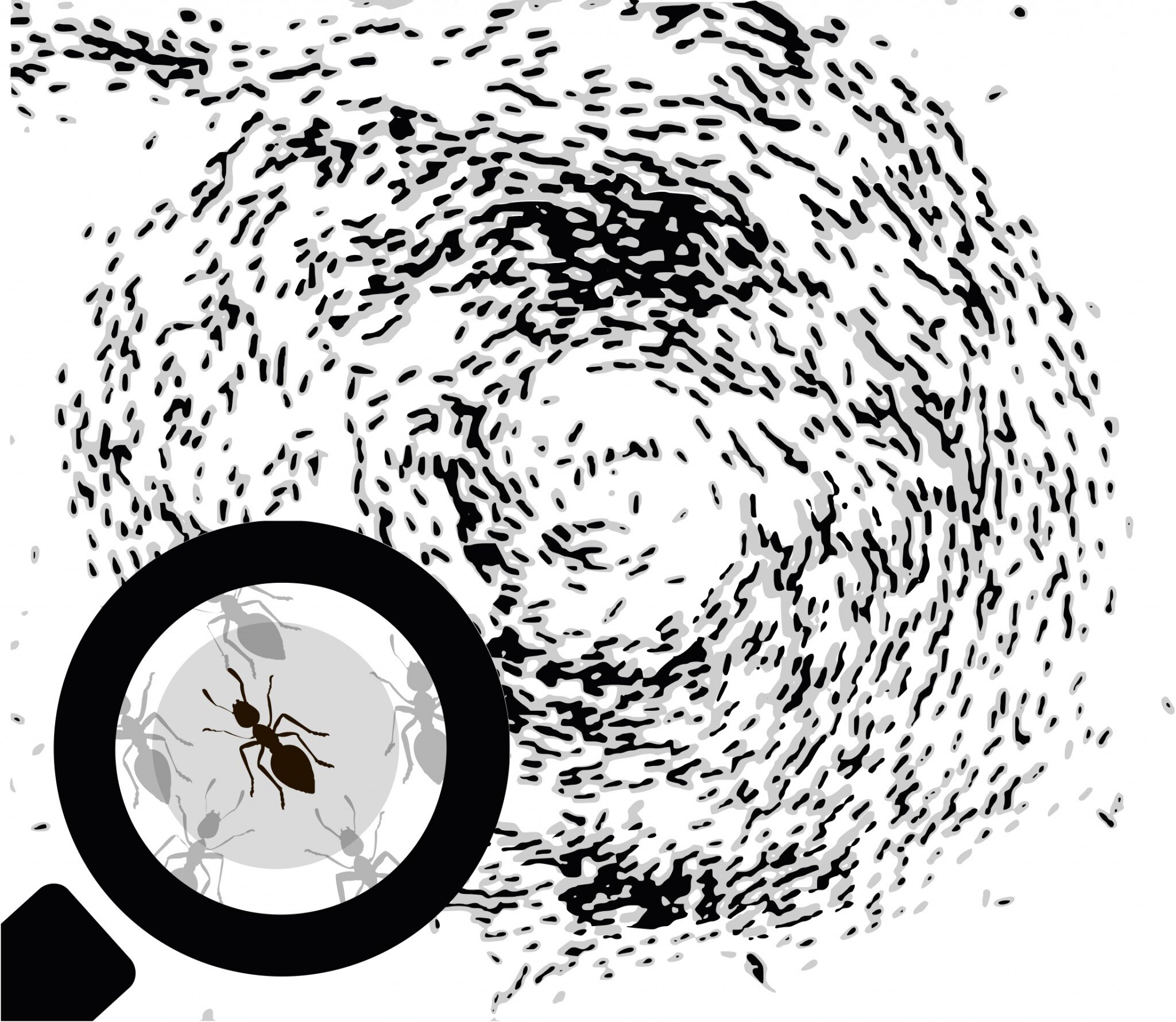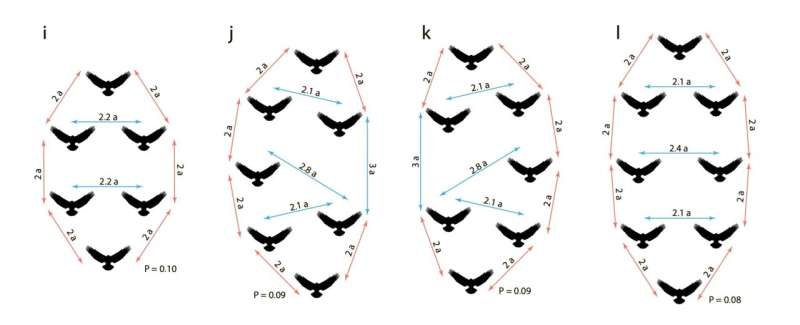
Artificial intelligence resolves riddle of animal swirling
A group of Skoltech scientists—Ph.D. student Egor Nuzhin, Assistant Professor Maxim Panov, and Professor Nikolay Brilliantov—applied artificial intelligence methods to explain an enigmatic natural phenomenon: animal swirling. While AI has already proved its outstanding performance in a wide range of applied problems and engineering environments, the new study published in Scientific Reports demonstrates another facet of AI: its ability to solve fundamental problems, in this case, understand the collective behavior of living beings.
Swirling is observed in large groups of animals at different evolution stages, ranging from fish to insects—the creatures move coherently around the common center of a group. The biological function of this bizarre behavior has long since puzzled evolutionary biologists and systems scientists.
The conventional approach to explaining swirling assumes artificial forces acting between animals, which move together subject to these forces. In contrast to this, the Skoltech researchers proposed an aim-centered model. It is formulated in terms of reinforcement learning, a powerful tool in the AI toolkit.
Based on simple rules and natural restrictions, the beasts in the simulations learned, by trial and error, to achieve the goal of moving together. Namely, they strived to maintain certain distances between each other and to the center of the pack. Surprisingly, this resulted in spontaneous swirling. Even more strikingly, swirling turned out to be essential for survival: It helped the animals resist hazardous external forces such as wind or underwater flows. A group trained for swirling could resist them hundreds of times more effectively than an untrained one.

Another interesting application of AI in this context is the grouping of animals. Birds migrate in flocks, fish assemble in schools, wolves hunt in packs, etc. Moving together, with an optimal mutual location, could be very beneficial, as it leads to motion with minimal effort. Applying the same aim-centered approach, together with reinforcement learning, the team demonstrated that the animals were able to find the most efficient patterns of locomotion. Those were the linear arrangement for a group of two, triangles for a group of three, a rhombus for a group of four. These and other, sometimes unexpected patterns for larger groups, were found by another independent method, which additionally validates the RL-based approach.
“Realizing full well that everything is built of elementary ‘building blocks of mathematics,” I can’t seem to stop being astonished by the power of AI methods,” Professor Brilliantov concluded.
Nature’s most beautiful performances could inspire the next generation of artificial intelligence
Egor E. Nuzhin et al, Why animals swirl and how they group, Scientific Reports (2021). DOI: 10.1038/s41598-021-99982-7
Citation:
Artificial intelligence resolves riddle of animal swirling (2022, January 24)
retrieved 24 January 2022
from https://techxplore.com/news/2022-01-artificial-intelligence-riddle-animal-swirling.html
This document is subject to copyright. Apart from any fair dealing for the purpose of private study or research, no
part may be reproduced without the written permission. The content is provided for information purposes only.
Stay connected with us on social media platform for instant update click here to join our Twitter, & Facebook
We are now on Telegram. Click here to join our channel (@TechiUpdate) and stay updated with the latest Technology headlines.
For all the latest Technology News Click Here
For the latest news and updates, follow us on Google News.

